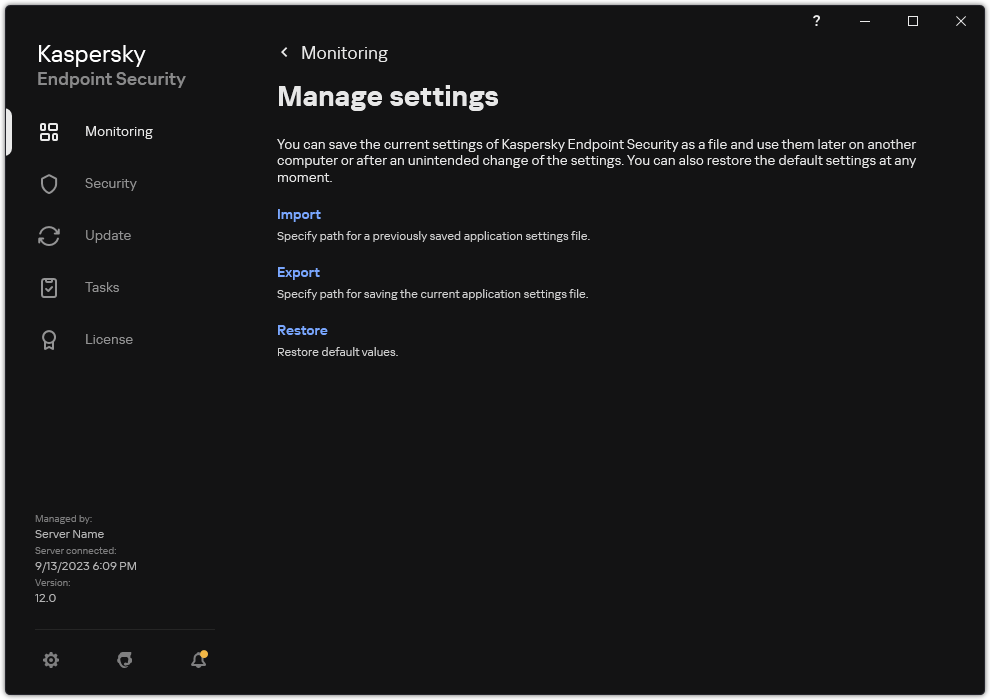Creating and using a configuration file
A configuration file with Kaspersky Endpoint Security settings lets you accomplish the following tasks:
- Perform local installation of Kaspersky Endpoint Security via the command line with predefined settings.
To do so, you must save the configuration file in the same folder where the distribution package is located.
- Perform remote installation of Kaspersky Endpoint Security via Kaspersky Security Center with predefined settings.
- Migrate Kaspersky Endpoint Security settings from one computer to another (see the instructions below).
To create a configuration file:
- In the main application window, click the
 button.
button. - In the application settings window, select General settings → Manage settings.
- Click Export.
- In the window that opens, specify the path to where you want to save the configuration file, and enter its name.
To use the configuration file for local or remote installation of Kaspersky Endpoint Security, you must name it install.cfg.
- Save the file.
To import Kaspersky Endpoint Security settings from a configuration file:
- In the main application window, click the
 button.
button. - In the application settings window, select General settings → Manage settings.
- Click Import.
- In the window that opens, enter the path to the configuration file.
- Open the file.
All values of Kaspersky Endpoint Security settings will be set according to the selected configuration file.

Managing the application settings
Page top